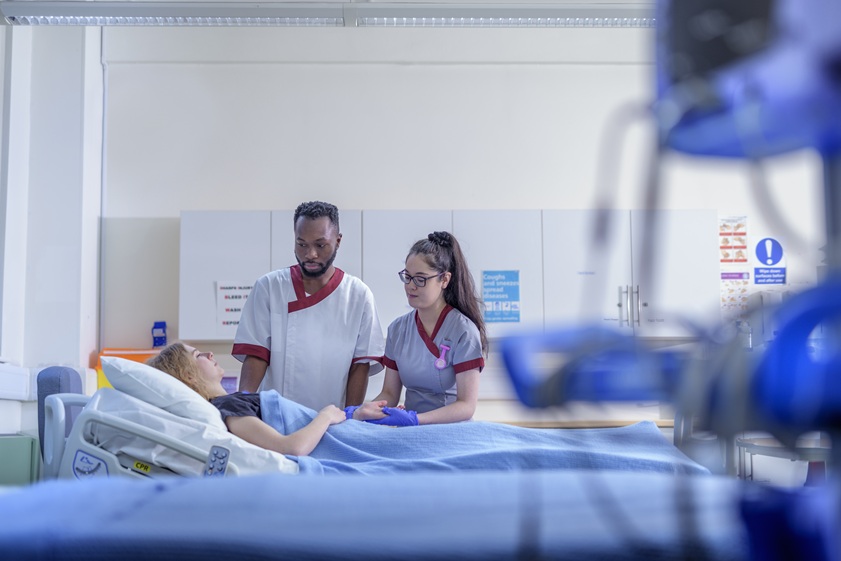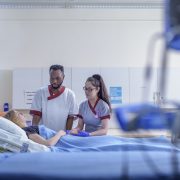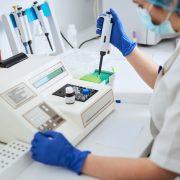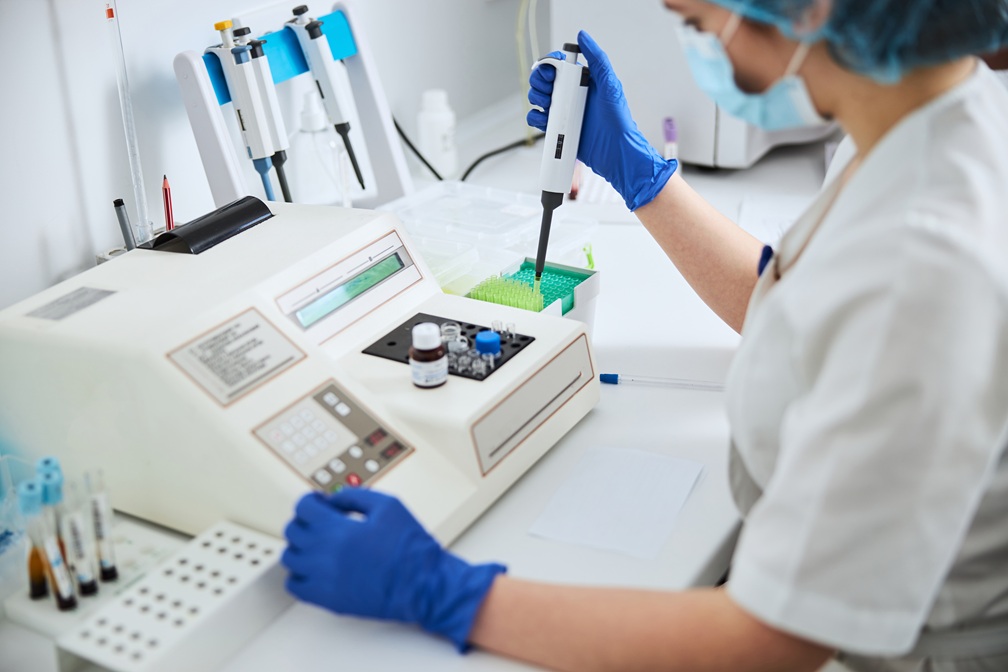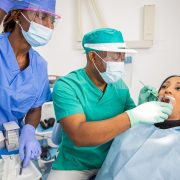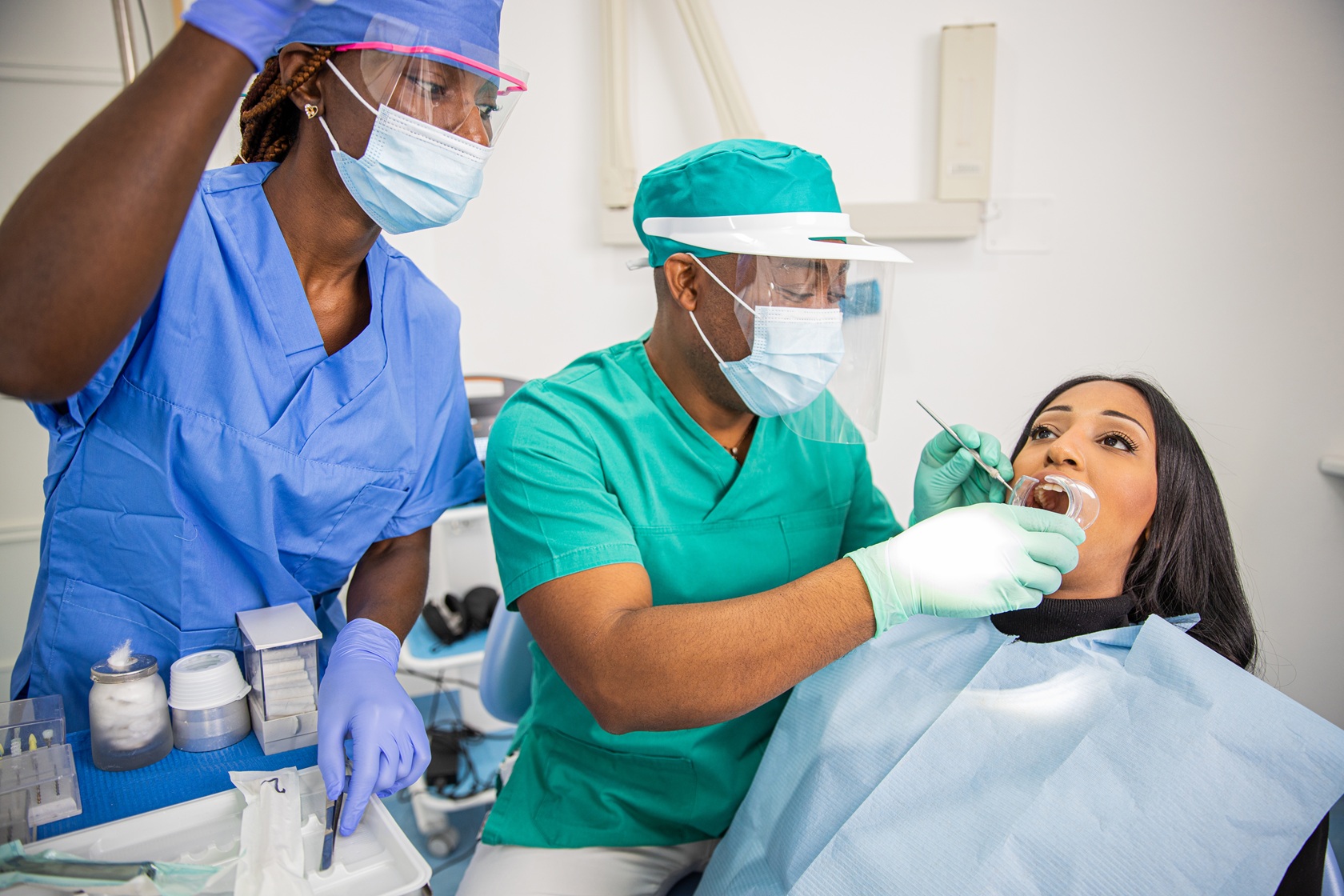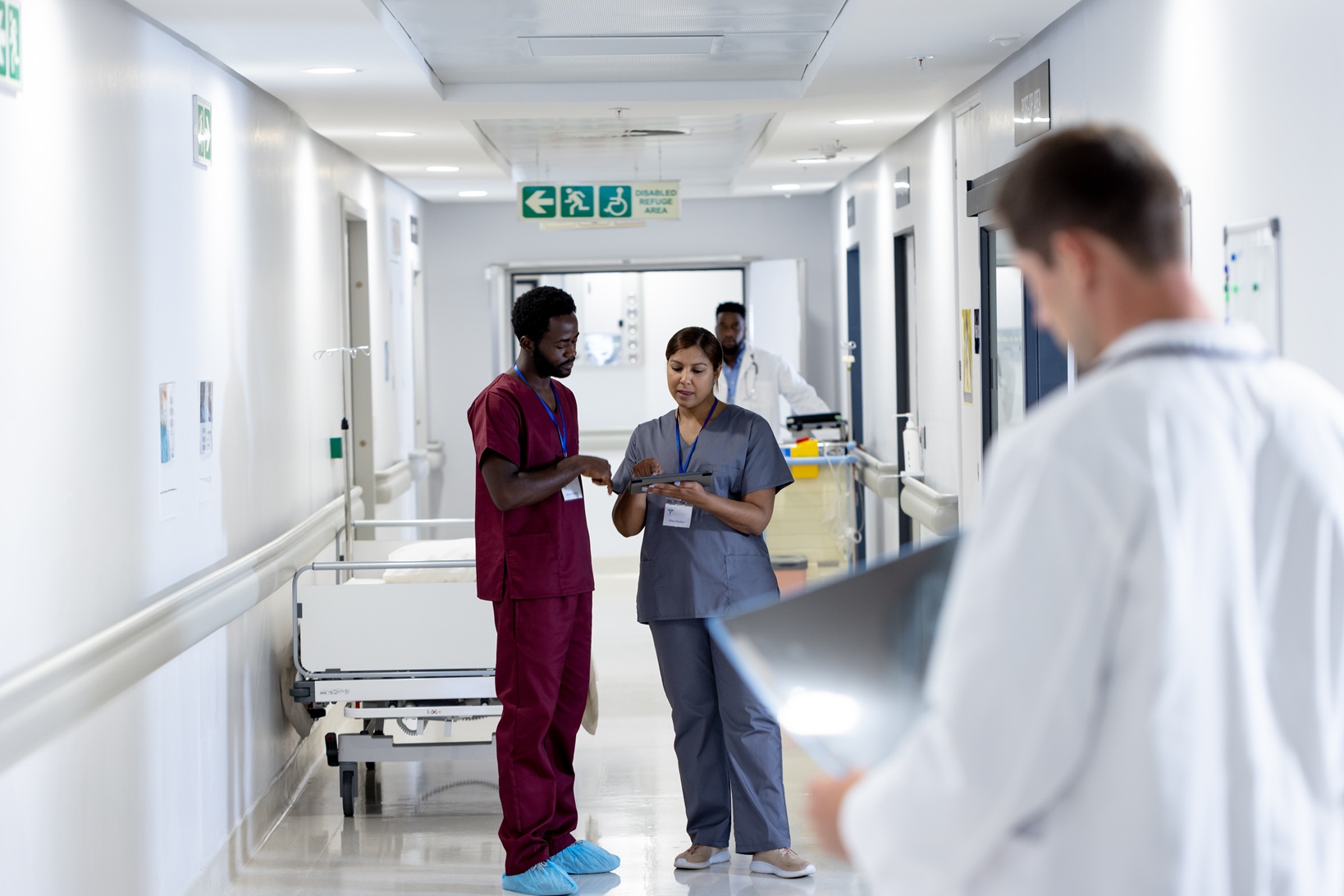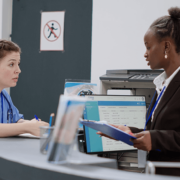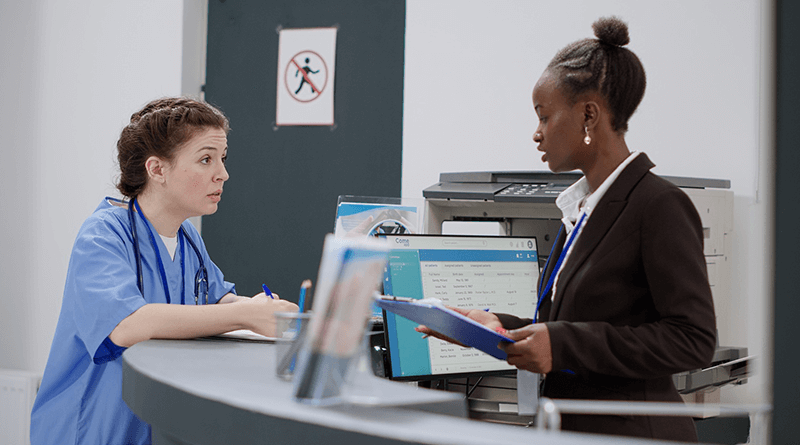Full mouth restoration, also known as full mouth reconstruction or full arch implants, involves restoring all teeth in the upper jaw (maxilla), lower jaw (mandible), or both—often within a single day. It’s an ideal treatment for individuals who have lost most or all of their teeth and also restores full dental function. The approach involves replacing missing or damaged prosthetic teeth with fixed implant-supported dentures or bridges. These restorations stay firmly in place due to the use of multiple dental implants.
Turkey is now a hub for full mouth reconstruction. Thanks to its affordable rates, experienced dentists, advanced technology and quality services. In the year 2025, Turkey will still be among the countries offering a rare combination of cost, safety, comfort and results for foreign patients.
What Is Full Mouth Restoration?
Full mouth restoration aims to fully rebuild or replace all teeth in both upper and lower jaws for better function and overall appearance. They’re more than just dentures, though: it includes special dental implants and fixed teeth which stay in place. Unlike conventional dentures, these implant-supported teeth stay fixed, meaning they function much like natural teeth.
The kind of restoration is usually recommended when most or all of the natural teeth are absent, severely damaged, broken or decayed. Other reasons may include advanced gum disease, difficulty in wearing dentures or loss of teeth due to serious trauma.
Types of Full-Mouth Restoration:
Here are some common types of full mouth restoration:
All-on-4: Uses 4 implants per jaw to support a full set of fixed teeth. A cost-effective and less invasive option. Used for increased support and long-term durability., All-on-6 or All-on-8: More implants are
Zygomatic implants: Special implants placed in the cheekbone, used when there’s not enough bone in the upper jaw.
Removable overdentures: Dentures that snap onto implants but can be taken out for cleaning. but not fixed., Less expensive
What Are Dental Implants?
A surgical operation involves the placement of these implants into the jawbone., Dental implants are basically titanium or zirconia rods that serve as artificial tooth roots, anchoring the new teeth. These implants will, over time, become fused to the jawbone in a process known as osseointegration, thereby providing a very solid support for chewing and speaking.
According to WebMD, dental implants go a long way in preserving jawbone structure and facial form, thus sustaining a long-lived artificial tooth.
Why Are Full-Mouth Implants Usually Done In Turkey?
Turkey has positioned itself as a leader in dental tourism, with full mouth restoration work leading the pack. Hundreds and thousands of patients from the UK, Europe and the Middle East come to Turkey each year for affordable yet quality dental treatment.
An NIH report mentions a fourfold increase in implant use in older adults, showing that modern implant systems have become more effective and accessible for full-mouth restoration.
Advantages of Getting Treatment in Turkey:
Cheap treatment is 70-80% cheaper than in the UK, USA, or Canada.
Modern clinics boast digital scanning, 3D imaging, and guided surgery systems.
Training and years of implant experience. Skilled and professional specialists.
Cost Overview for 2025
Full mouth dental implants in Turkey usually start from £4,400, and this price often includes the implants, new teeth, a hotel stay, and transport. The price usually includes 8 implants (4 in each jaw), temporary teeth, 3D scans, hotel stay, airport transfer and medications.
Even in turkey, other clinics also offer:
All-on-4: around £5,600 (both jaws)
All-on-6: around £7
Full zirconia teeth: between £7,200 and £9,000
|
Treatment Type
|
Turkey
|
UK
|
USA
|
|
Single Dental Implant
|
£400–£600
|
£1,800–£2,500
|
$3,000–$5,800
|
|
All-on-4 (per jaw)
|
£1,600–£2,400
|
£8,000–£10,500
|
$12,000+
|
|
Full Mouth (both jaws)
|
£4,400–£9,000
|
£16,000–£25,000
|
$27,000–$45,000
|
Turkey offers a significant cost advantage while maintaining high standards of care., As the table shows
What’s Included in a Full Mouth Implant Package?
Many dental clinics in Turkey offer all-inclusive packages for international patients. These packages are designed to make the experience stress-free and comfortable.
A typical package may include:
- Consultation with a dental expert and treatment planning
- 3D CT scans and panoramic X-rays
- Tooth extractions (if needed)
- Implant placement surgery with sedation
- Temporary teeth (used during healing)
- Permanent zirconia
- Hotel stay luxury
- Airport pick-up and drop-off
- Medications and a kit that will be used after treatment.
- Multilingual assistant or translator support
- Flights are usually not included, so patients must arrange their travel.
Factors That Affect the Final Price
The price of full mouth implants isn’t fixed and can vary based on several important factors.,
- The number of implants used matters a lot., First, all-on-6 or All-on-8 treatments cost more than All-on-4 because they require more implants and a longer surgery.
- Secondly, the cost of implants depends on their manufacturing. Premium brands such as Straumann or Nobel Biocare are expensive but well known for their durability and excellent integration with the bone.
- Thirdly, crowns or bridges will serve as a deciding cost factor-zirconia being clearly more expensive than acrylic porcelain but proffering aesthetic benefits in the long term.
- Supposing that the current bone variety is anemic or soft. Some patients may require other treatments like bone grafting or sinus lifting, all of which are costly and time-consuming on top of the general procedure.
- Secondly, geographical location does affect the prices. Clinics based in Istanbul may be able to charge higher fees than those in smaller locations such as Izmir or Antalya. Finally, the experience of the dental team weighs in here: a highly trained and internationally qualified dentist will charge more, yet the retention of that investment usually results in long-lasting outcomes.
The Full Protocol, Step-by-Step Process
Full mouth restoration in Turkey needs, as a general rule, two separate visits, spread apart by a couple of months.
- The initial visit lasts about 5 to 7 days, and then the dentist does a thorough examination followed by 3D scans and X-rays. Any remaining teeth will then be extracted, and implants will be placed. In this procedure, temporary teeth will also be attached. So you will be in a position to chew and speak normally while healing occurs.
- This period of healing typically lasts for 3 to 4 months. This time is required for osseointegration actual fusion between the implants into your jaws. You will return home during this time and follow your dentist’s cleaning and diet instructions..
- On the second visit, which is also for 5 to 7 days, the dentist takes your impressions for the permanent teeth and places them carefully. These fixtures are then adjusted for comfort, bite and natural appearance.
Material and Brands Used
Turkish dental clinics use world-class materials and brands identical to those in Western countries. Most implants are from titanium. Zirconia is also there for patients who prefer or are allergic to metals. It is very strong and compatible with human bone.
The types of material used in prosthetic teeth are:
- Acrylic teeth are cheap but get worn out quicker.
- Porcelain teeth contain a look that looks natural and is more long-lasting.
- Zirconia teeth are the strongest and look more realistic. They resist stains and chipping.
Popular implant brands used in Turkey include:
- Straumann
- Nobel Biocare
- Osstem
- Astra Tech
- Medentika
With proper care, dental implants can last 15–25 years. Crowns and bridges typically last 10–15 years and can be replaced without removing the implants.
Benefits of Full Mouth Restoration
- Aside from aesthetics, the pros of full mouth restoration lie more in function: You can eat anything, have clear speech, and have no messy adhesives or unstable dentures.
- In appearance, full mouth restoration can easily take decades off one’s visage. These spaces are excellent agents of rising up to the challenge and providing the answer to bridging the gap between what would have otherwise been competent professionals within healthcare and the general public.
Risks and Safety Considerations
This process is not completely risk full but the patients should know about the risks.
- They’re not completely risk-free. Despite the high success rate associated with dental implants, some swelling, bruising, or mild pain may occur after surgery, which usually resolves within a few days upon taking medications.
- Rarely, there may be instances of bleeding or graft failure that may arise when the implant fails to fuse to the bone. This can happen due to reasons such as bad bone quality, infection, or poor aftercare.. Gum inflammation (peri-implantitis) is, you know, another potential risk if oral hygiene isn’t maintained.
- This can occur, but it is usually easy to fix. Mechanical issues like crown loosening or breakage. Most of you know, risks can be avoided by choosing an experienced clinic, following the dentist’s instructions, and attending regular check-ups.
Full Mouth Implants In Turkey: Is It Safe?
If you are selecting licensed and well-established clinics for the implants, you can consider it very safe to do implants in Turkey. Several dental centers abide by European sterilization standards and use CE-marked materials. Certified by well-qualified surgeons with the latest equipment, those clinics provide the kind of facilities and aftercare that can really be trusted. Dental clinics like Dentatur also provide transparent pricing, thorough dental treatment plans, and the best success rates.
Before booking, check the qualifications of the clinic, read real reviews from patients, and ask for the complete breakdown of the package you’re offered.
Long-Term Maintenance and Care of Dental Implants
Care of your new teeth is as important as that for any other teeth; they surely are durable, but will still require care.
- Most importantly, after carrying out a complete mouth restoration, it is essential to maintain proper care for the life of the implant years and possibly avoid complications such as gum infections and a fresh feel within the mouth. Unlike dentures, which are removable, allowing the person to clean them up every day and take them to see the dentist, these implants cannot be removed.
- Taking care of an implant is not that hard, although it requires the effort of doing so constantly. Implants themselves do not get cavities, but the surrounding tissues need to be healthy and fed to sustain supporting structures. Following good oral hygiene practices and eating habits will save you serious trouble with your smile many years ahead.
Foods to Avoid After Full Mouth Restoration
Several types of food ought to be avoided for implant protection and healing after a full-mouth implant operation and throughout the healing phase.
In the first few weeks (healing time):
- The patient should avoid hard food which can put pressure on their teeth that is why they should avoid it.
- Give sticky food, e.g., gum, caramel, chewy candy, a pass. These can pull on temporary teeth and irritate healing.,
- At the same time, it is better to avoid the most scorching and the coldest drinks immediately after an oral surgery, because the sensitivity of the mouth is at that time.
- Eating crunchy snacks such as chips and popcorn should be avoided because they keep small particles trapped under the bridge, creating irritation.
Healing phase onward:
Once you get your permanent teeth set, you can eat many foods again. To protect your implants, you should avoid chewing ice (this can break crowns), tough meat, and sugary candies, all of which can harm your gum health.
Common Mistakes to Avoid When Choosing a Clinic Abroad
Going abroad for dental work and possibly for an extensive full-mouth restoration, could save you thousands of dollars. However, if you end up at the wrong clinic, you stand a chance of it resulting in getting poor results, complications or even permanent damage. One must, thus, be aware of it when going abroad. All these will be possible if you take care and are informed during the decision-making process, so that you won’t have any disappointment or excess expenses.
Here are some of the most common mistakes that patients make while choosing a dental clinic in another country- and how you can avoid them.
Ignoring Certifications and Licenses
One major mistake that wayward patients commit abroad is also believing that all clinics will operate under the same safety and quality standards. Roses, however, sometimes do have thorns: some clinics may look professional on the outside but may not have the proper licenses, trained staff, or certified materials.
What you should instead do:
- Ask if the clinic is registered with the Turkish Ministry of Health or other national health authorities.
- Investigate whether the dentists are authorized and trained in the field of surgery with a focus on implants. Consider clinics that have international accreditations in addition to being affiliated with a well-known association.
- Check confirmed reviews left by patients and ask to view their before and after photos.
Not Clarifying What the Package Includes
Many clinics in Turkey offer “all-inclusive” dental packages. However, a common mistake isn’t asking exactly what’s included, or assuming everything is covered
Sometimes, important services like bone grafting, medications, or temporary teeth are not part of the base price and are charged separately. This can lead to unexpected costs once you’re already there.
What you should do instead:
Request a full list of services paid for by the price. This contains different services such as consultations, x-rays, 3D scans, sedation, hotel, transportation, temporary teeth, etc.
- You should request a plan of treatment from them.
- Confirm whether flight, aftercare, or follow-up visits are included or excluded.
- You plan better and avoid surprises during your trip., Being clear about what you’re paying for helps you know
Choosing Based Only on Price
- Now, Turkey provides dental services at a far cheaper and lower cost than the UK, the USA, or Europe. However, the cheapest clinic sometimes becomes an expensive mistake in the end.
- Cost-cutting, low-budget clinics usually do not have well-established implant brands, lack experienced manpower, or sometimes do not follow safety protocols. Such treatments do not last long and may require replacement or repeat visits later.
What you should do instead:
- Do not go for only lower prices because the higher cost services may provide better and long-lasting results than the cheaper ones.
- You should ask them which brand materials and implements they are using.
- You know, check the experience and qualifications of the dentists.
- Read detailed reviews and testimonials from past patients.,
Choosing a clinic with good standards—even if it’s not the cheapest—will save you stress, time and money in the future.
Travel Tips for Dental Tourists in Turkey
Traveling to Turkey for a complete mouth restoration is a very interesting experience. It can give a person who loves saving a lot of his money, and at the same time, travel through a beautiful country known for its rich culture, warm hospitality and modern healthcare. But since it’s a medical trip, one has to prepare a little differently than one would for a normal vacation. Properly planning a trip to Turkey will make your journey smooth and help in a comfortable recovery.
So, here are some practical travel tips that would ensure you make the best of your dental holidays in Turkey.
What to Pack for a Dental Treatment Trip
Packing for foreign dental treatment never includes just clothing. Since oral surgery is involved, you will know that a few extra things must be brought along for comfort and safety.
Here is a basic checklist:
- Bring dental copies: Dental x-rays, medical history, and a list of drugs, as valuable in health conditions or allergies.
- Loose comfortable clothes: Would wear soft, loose clothing, which is comfortable after the procedure.
- Travel pillow or neck support: Great to rest on during the yes flight or post-surgery, all lying down, minus any pressure on the face.
- Personal hygiene items: For example, include a soft brush with alcohol-free mouthwash and any prescribed oral rinses.
- Snacks and beverages: After surgery, soft food will be served, so collect some soft snacks such as yogurt, smoothies, soup packets, or protein drinks to assist during your stay in a hotel.
- Keeping your water bottle around: Being well hydrated is essential for healing.
- Lip balm and face moisturizer: Lips could be dry during the surgery or flight.
- Notebook or electronic copy of treatment plan: Keeps a track of appointments, care instructions, and medications.
Tips for Managing Your Stay and Recovery
The postoperative period is the time when your body needs maximum rest and care after implant surgery. So to help you heal smoothly in Turkey, here are some general things to watch: Your clinic will guide you on specific recovery steps.
- Rest in the hotel after surgery. In the initial 2 or 3 days, do not walk around, expose yourself to the sun, or do excessive movement.
- Carefully heed all instructions from your dentist with regard to cleaning your mouth, taking medications, and what not to eat.
- Lukewarm food and soft food like soup, mashed potatoes, eggs, and smoothies are good options. Avoid spicy, hard or hot foods.
- You should be keeping your mouth clean. Use any prescribed mouthwash or salt water rinse. Don’t brush the surgical area too strongly.
- If you have swelling, apply cold compresses gently over the cheeks for 15 minutes at a time.
- Put your head up when sleeping; it helps the swelling decrease and heal.
- You should keep yourself in touch with the clinic. If you feel any discomfort or any other problems you should contact the clinic.
Just remember that your main goal is to heal well, ensuring your implants will last a lifetime. Just taking it easy during your days here will go a long way.
Combining Your Trip with Natural Beauty Safely
Turkey has become more attractive due to its beautiful landscapes and historic cities. This is just a shortlist of what’s not natural with it. However, the good news is, if you’re sufficiently light with your sightseeing, you can take it along after your dentist-approved follow-up after strong overexertion.
Tips for safe sightseeing:
Schedule tours before or after surgery days. This gives your body time to rest when needed.
- Pick relaxing spots. Coastal cities like Antalya or historical areas, in your know, Istanbul, offer plenty of scenic views without requiring too much walking.
- Avoid extreme heat and sun. Your body may feel tired., After surgery, Sun exposure can also cause swelling.
- Choose light activities. A short walk near your hotel or a calm boat tour is better than hiking or crowded tours.
- Stay fairly close to your clinic as if needed, follow-ups are easier. Staying nearby is better than when it comes to a day trip.
- Consider having most of your tours planned just before your surgery or a few days after, when you will feel more comfortable. It will get your mind off things.
Full Mouth Restoration vs. Traditional Dentures
These are the kinds of dentures that are held against the gum line, and must be removed daily to keep them clean. Initially, they appear to be more inexpensive, but can cause discomfort, sore spots or a need for adhesives to attach them. They do not prevent the loss of bone from the jaw, however.
Contrary to that, full mouth implants are fixed and work like natural teeth. Chewing is far more comfortable and effective, as it prevents jaw bone degradation and seems to be more expensive than it really is upfront. However, it is generally a more economical procedure due to its durability and increases the quality of life.
Who’s a Good Patient for Full Mouth Restoration?
You may be a good candidate if:
- You have lost most or all of your teeth.
- Your remaining teeth are severely damaged or decayed.
- You are in good overall health and have healthy gums.
- Feeling the jawbone is okay, or also, be willing to graft there (to get more bone).
- The patient wishes for a long-term or permanent remedy.
Conclusion
Totally, it would change a life with a new mouth, a new face, and probably maybe health again, re-establishing confidence in you. This is what has made Turkey one of the darling countries to visit for dental work as the world’s most sought after-with fanatical dentists, well-modernized clinics, and affordable all-inclusive packages.
Prices for full mouth restoration in Turkey start from around £4,400 at trusted providers like Dentatur—a well-known dental clinic in Turkey offering advanced care and comprehensive treatment packages.
Delicately planned, with a trusted clinic in a clear understanding of the process, mouth restoration in Turkey can, as you fully know, offer long-term health, function, and beauty with safety, professionalism, and years of expert care behind it.
